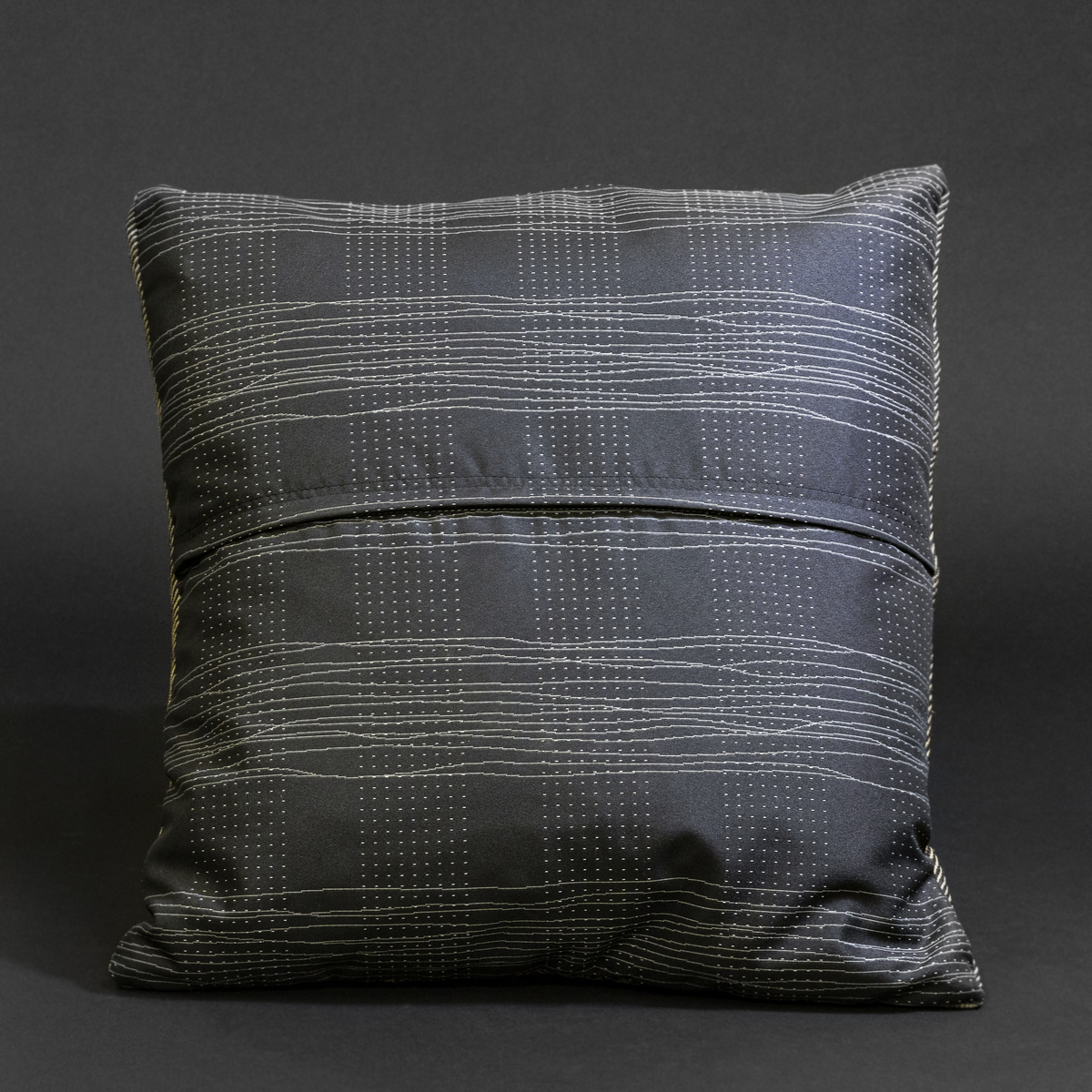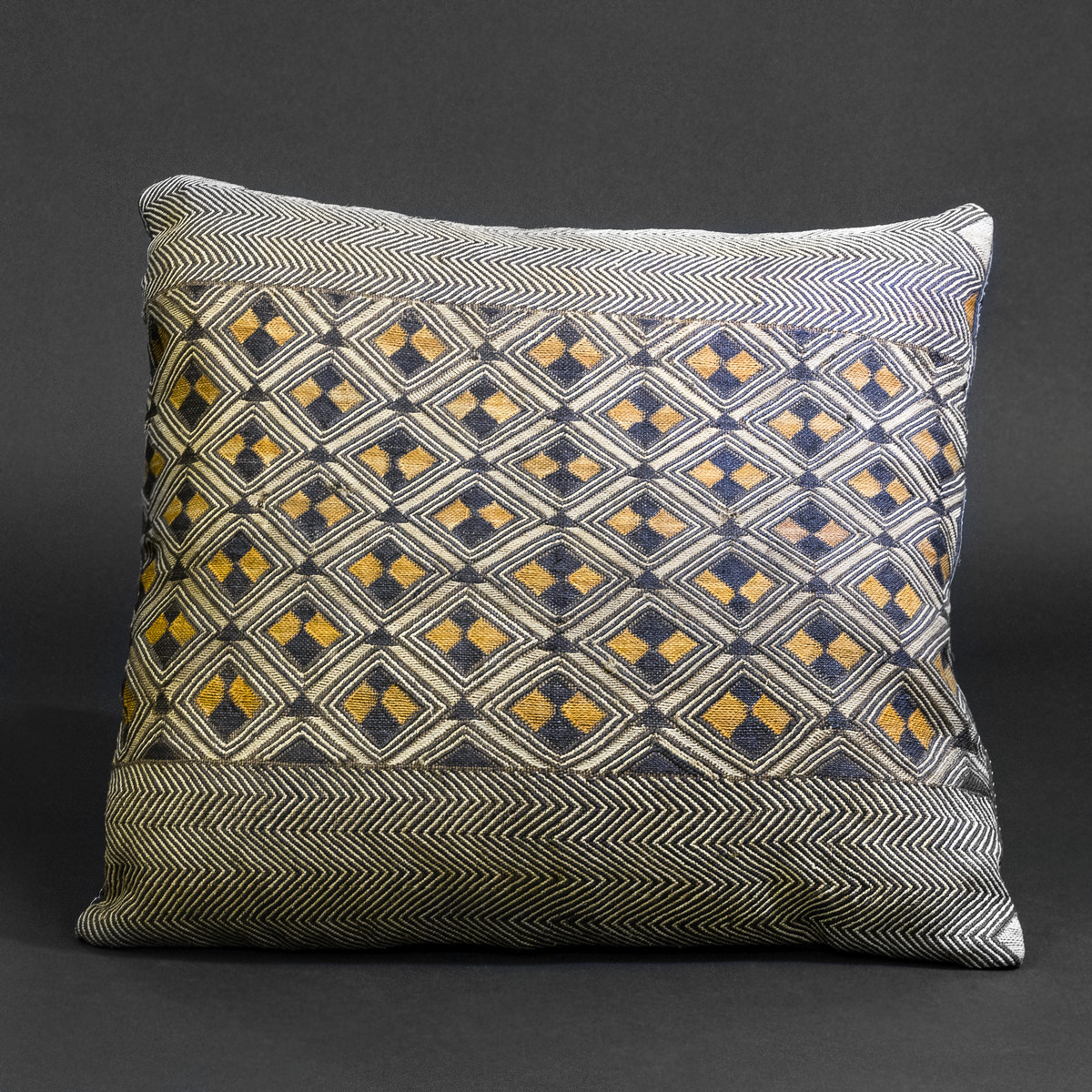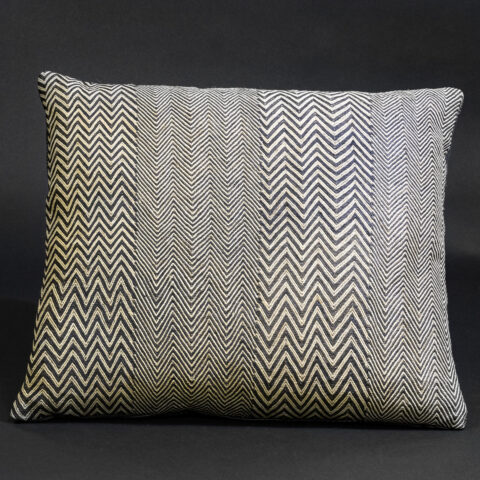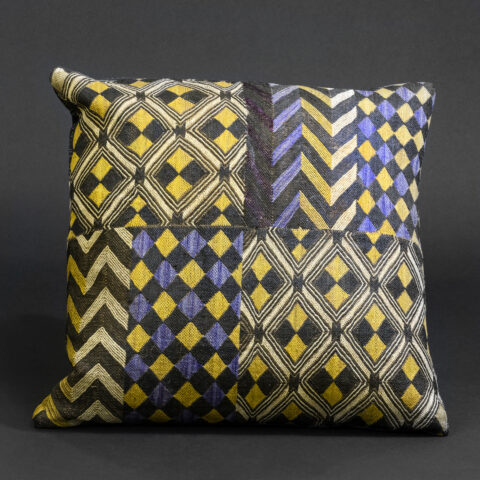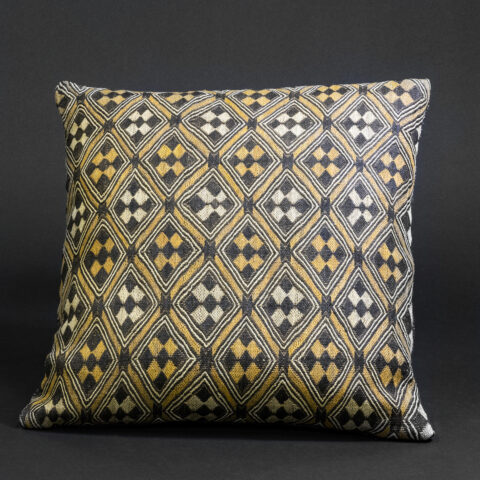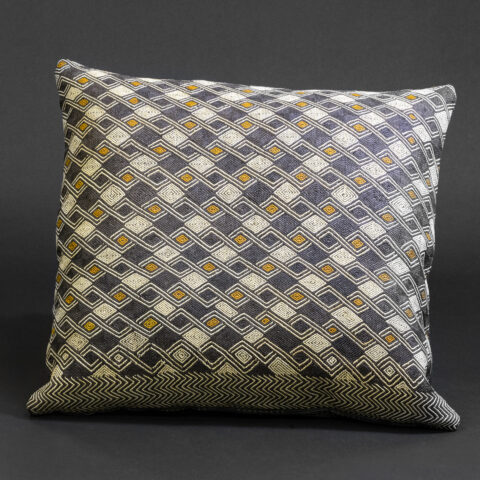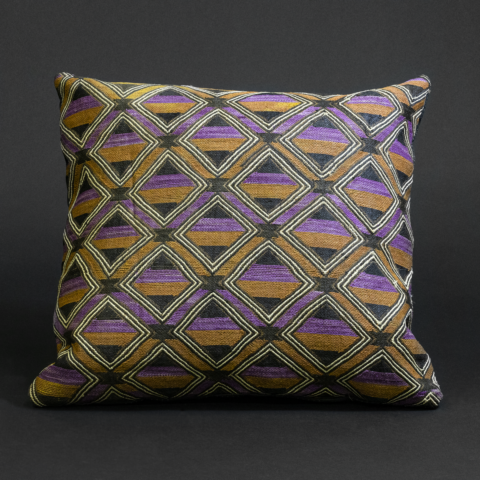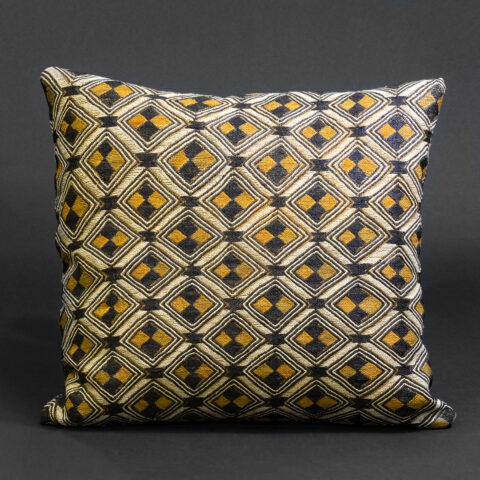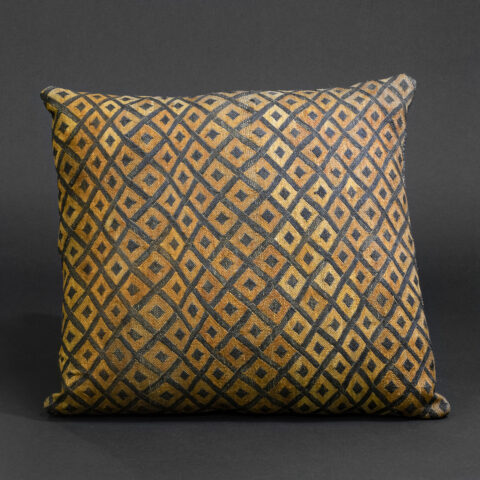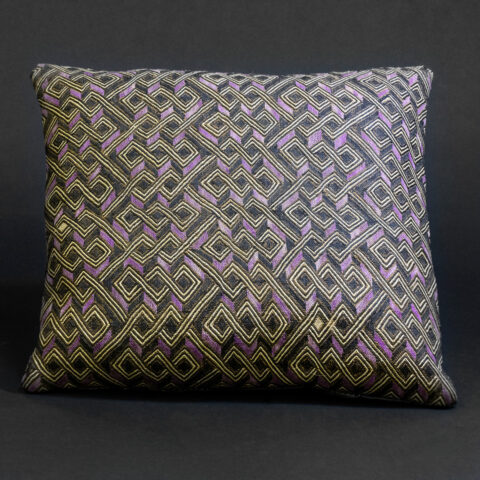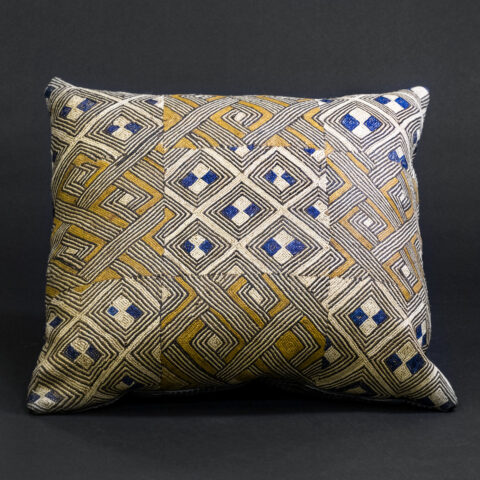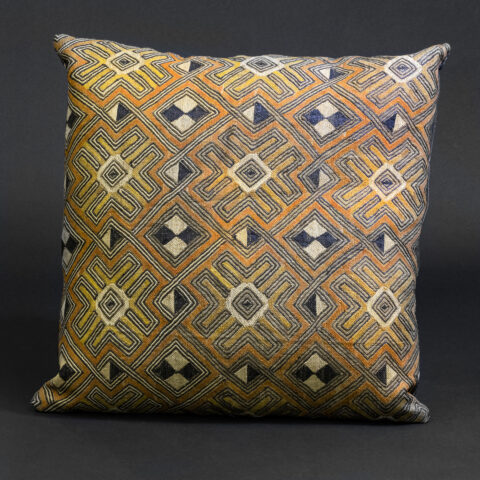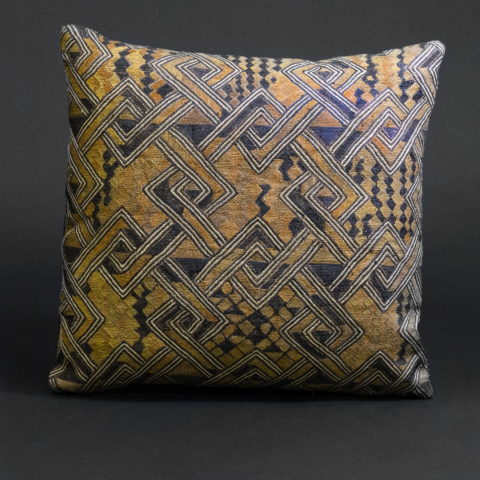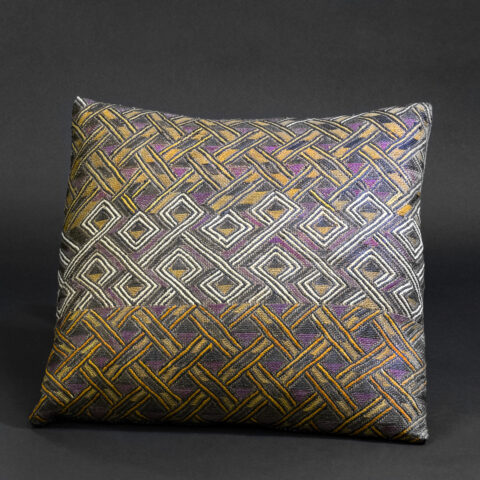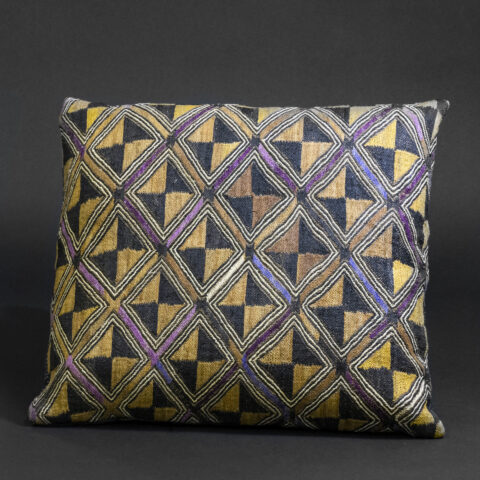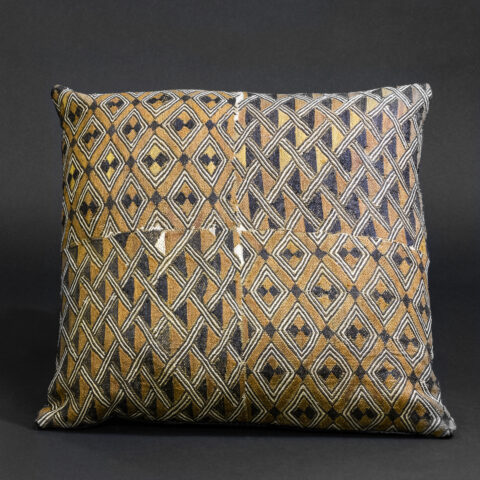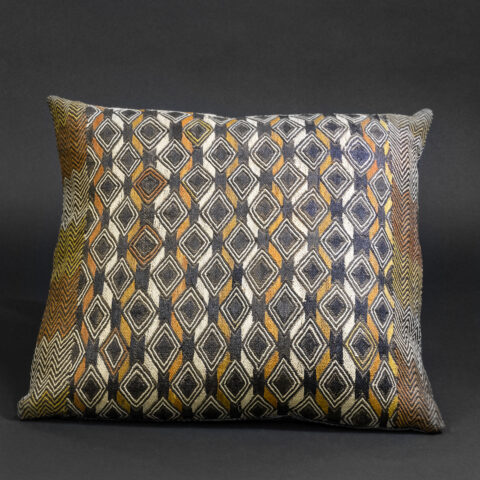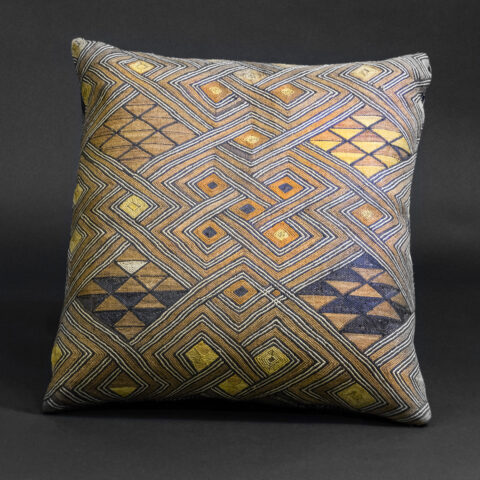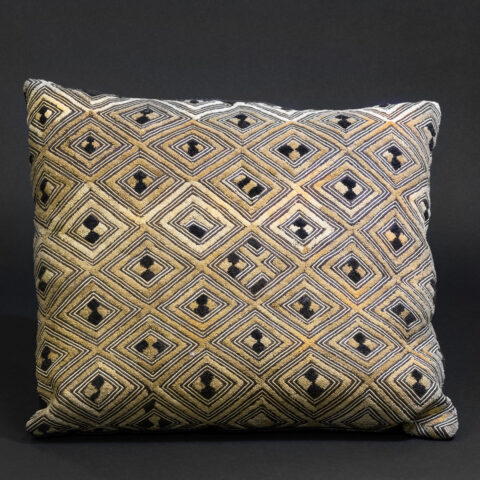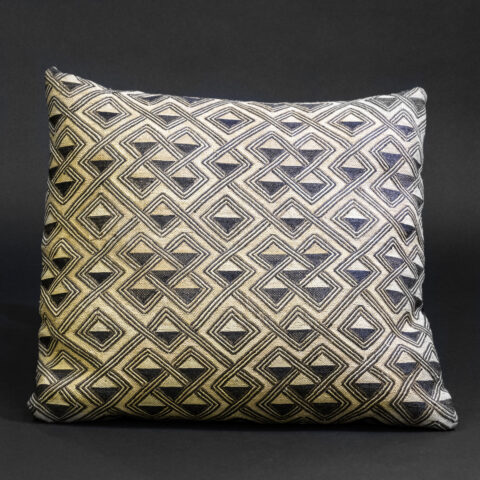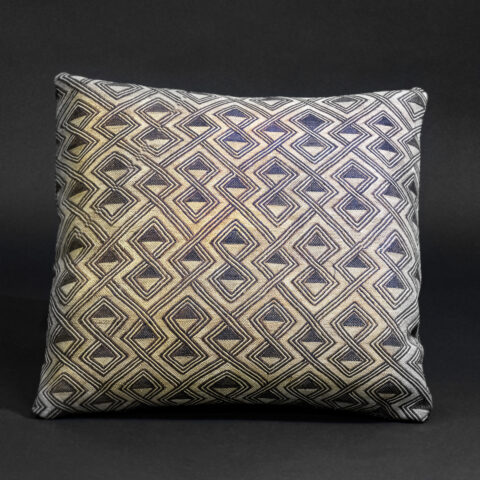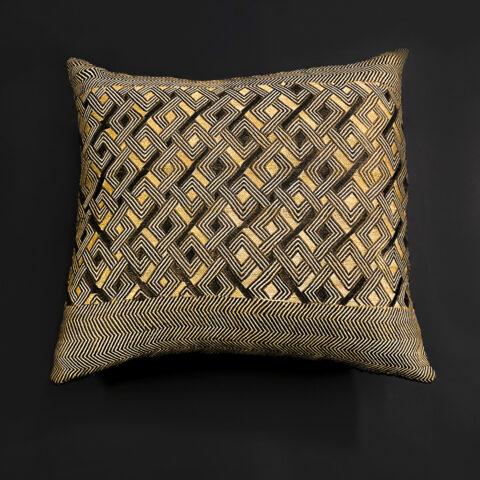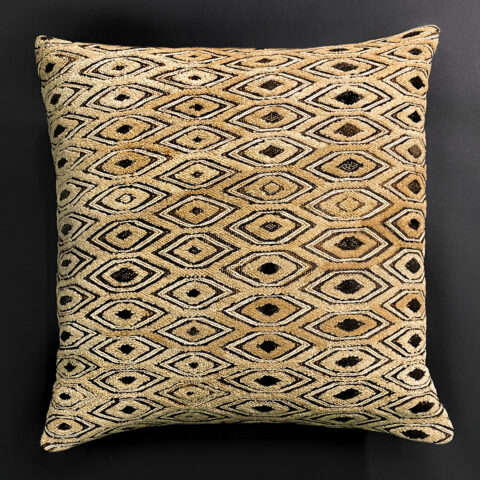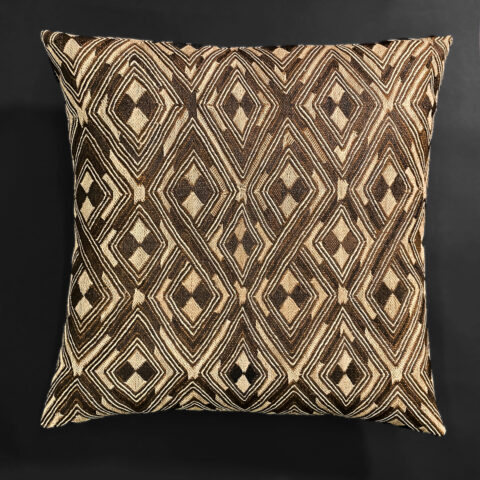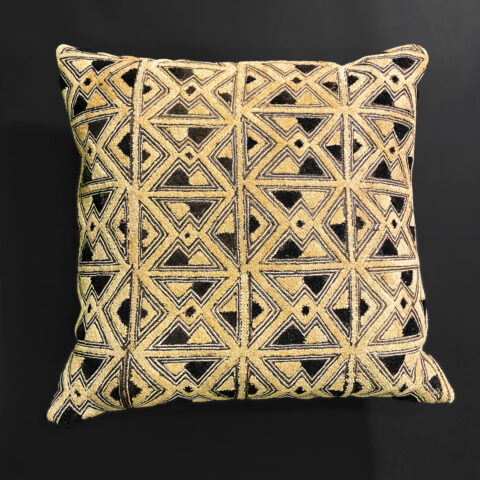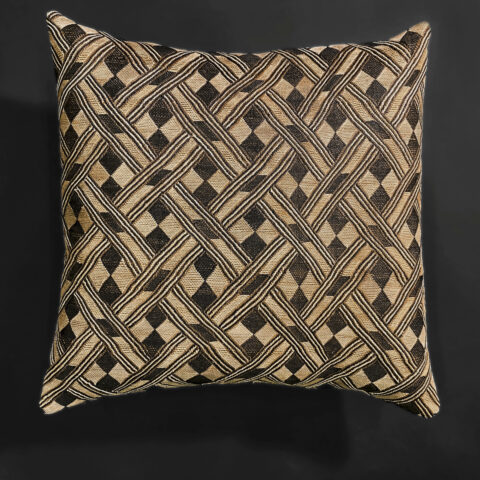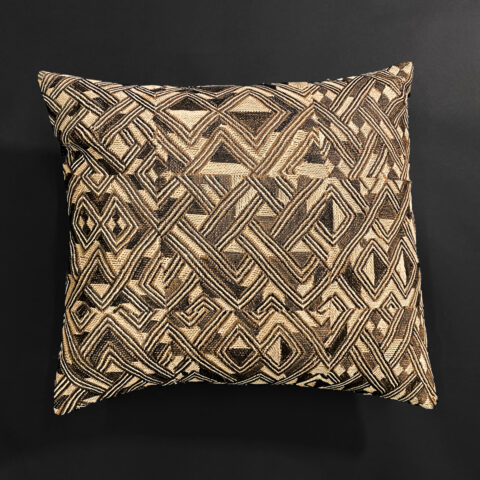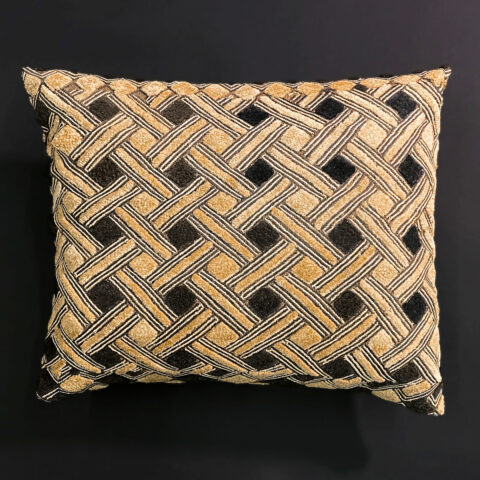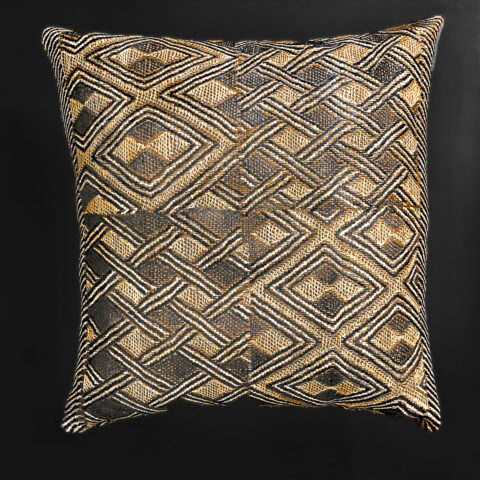Description
Balancing order with ornamentation, the “Voices in Geometry” Kuba Pillow is a striking textile composition embodying both visual harmony and cultural depth. Crafted from handwoven raffia cloth by the Kuba people of the Democratic Republic of Congo, this elegant cushion features a meticulously arranged diamond grid pattern, each lozenge embroidered in warm ochre, ivory, and deep indigo—tones drawn from mineral-rich earths and organic plant dyes.
The alternating diamond forms—referred to in Kuba symbolism as ikula—evoke notions of fertility, wisdom, and continuity. Their geometric repetition reflects a cosmological worldview where structure and rhythm guide human and spiritual life. Framed above and below by fine zigzag bands (liyelele), this pillow visually references protective boundaries—commonly interpreted as shields against chaos or malevolent forces.
Historically, such raffia textiles were not simply decorative; they were repositories of cultural memory and prestige. In Kuba society, only initiated women—often from aristocratic lineages—were permitted to embroider these cloths, translating the oral wisdom and lineage of their clans into abstract visual codes. Kuba men would first weave the raffia base on a single-heddle loom, a time-honored practice dating back to the 16th-century reign of King Shyaam a-Mbul a-Ngwo. It was under his rule that Kuba textiles flourished into a royal artform, reserved for ceremonies, dowries, and ancestral offerings.
The tactile surface of the raffia cloth lends this pillow a quietly luxurious presence—subtly lustrous, slightly textured, and richly layered with cultural meaning. As with all authentic Kuba textiles, the final composition may appear asymmetrical upon closer inspection, a purposeful nod to the Kuba aesthetic ideal: balance within imperfection, a philosophy that honors the unpredictability of life.
Adapted by NOA Living into a contemporary accent pillow, this piece bridges ancient African textile mastery with modern interior sophistication. Whether styled on a sleek leather sofa or layered into a curated ethnographic ensemble, it offers collectors and design aficionados a tangible link to one of Africa’s most intellectually rich artistic traditions.


